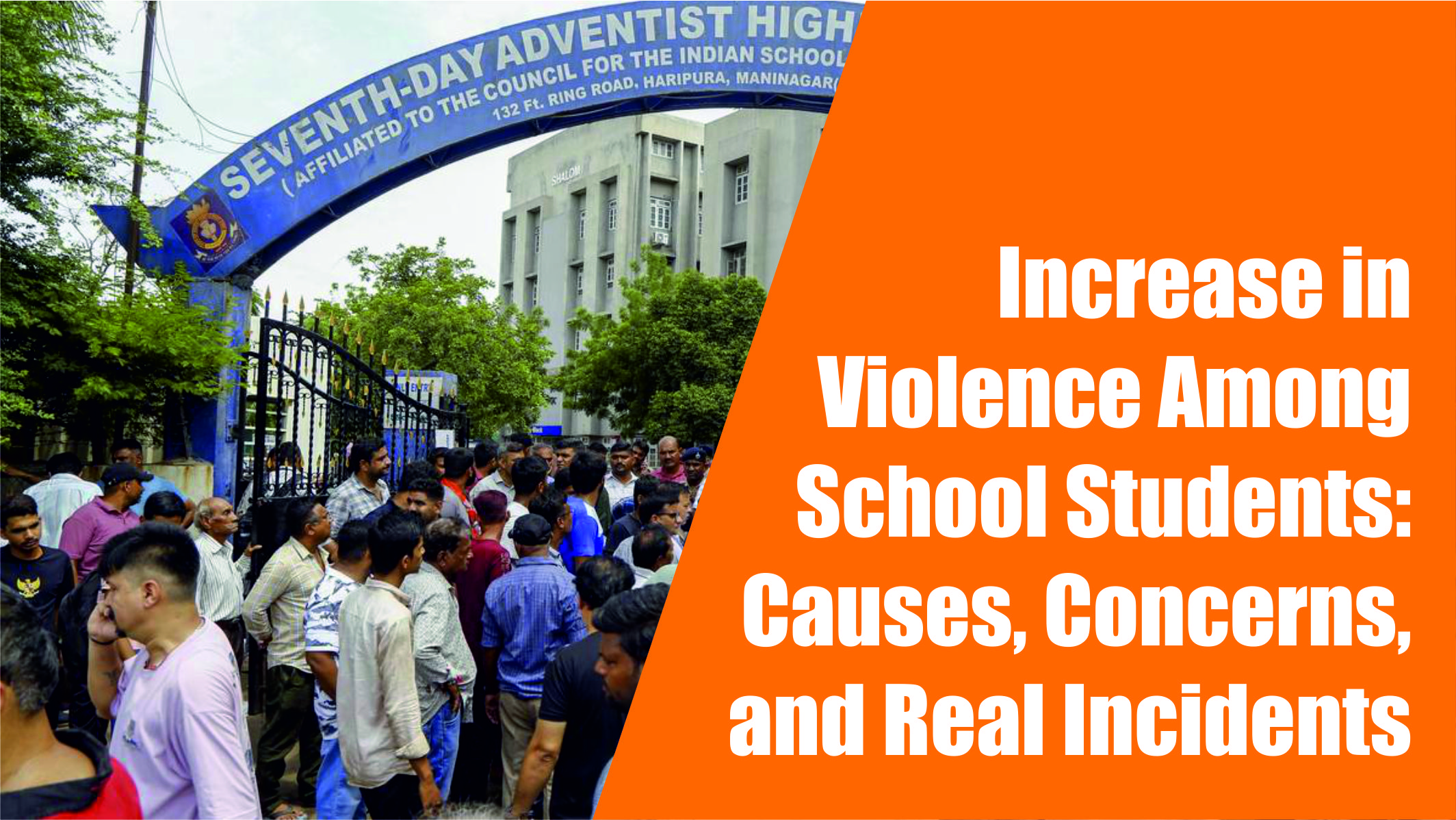Increase in Violence Among School Students: Causes, Concerns, and Real Incidents

In recent years, the rise of violence among school students has become dangerous. From bullying and physical quarrels to stab and large -scale attacks, schools -once safe havens -are surrounded by activeness. Understanding both the root causes and recent real world examples is essential for meaningful intervention.
1. Family Environment and Parenting Styles
Children who absorb derogatory dynamics at home - it takes aggressive behavior in school - nurture, domestic conflict, or emotional neglect - often takes aggressive behavior in school. The absence of nutrition support disrupts their emotional regulation and conflict solution skills.
2. Peer Pressure and Bullying
The colleague effect is powerful during adolescence. To achieve the situation, some students resort to violence, to avoid retaliation, or hunting. Without strong intervention, the spiral in more severe aggression is bullying.
3. Influence of Media and Technology
Excessive risk for violent media -gases, social media, and unmistated content is aggressiveness. Cyberbuling and negative online affects aggressive behavior in youth.
4. Academic Pressure and Stress
Intensive educational expectations - examination, competition, parents' pressure - can lead to emotional breakdown. When the sexual mechanism fails, aggression sometimes appears only as an outlet.
5. Mental Health Issues
Anxiety, depression, ADHD, and other psychological challenges remain at least. Without proper consultation, these issues may appear externally as violent behavior. Steigma prevents many students from seeking help.
6. Lack of Value-Based Education
Modern courses often leave moral and emotional learning. When schools focus on academics completely, students remember the necessary skills such as sympathy, conflict solution and respect.
7. Socio-economic and Environmental Triggers
Poverty, social inequality and community violence often normalize aggression as a survival system. Schools are not untouched by these external pressures.
Recent Incidents Highlighting the Crisis
a) Ahmedabad, India - Malignant School Stabbing and Institutional Failure (August 2025) A deep disturbing incident at the seventh day adventist school in Ahmedabad saw a Class 10 student badly saw a class 10 colleague. Outrage followed allegations of institutional negligence - instead of calling an ambulance, the school allegedly called a water tanker to wash blood, delaying life care for about 30 minutes. The tragedy staged a violent protest by the Sindhi community and parents, causing vandalism and conflict with employees and police.
b) Gazipur, Uttar Pradesh, India - Group Clash Deadly Deadly (August 18, 2025) In a private school in Gajipur, a confrontation between two groups of class 10 boys with weapons led to the death of a 14 -year -old student. Two others were injured and hospitalized. The incident was bound by the prior neglect of school officials to increase tension.
c) Nantes, France - Mass stabbing in private high school (April 24, 2025) In Nantase, France, a 15-year-old student attacked his peers with a knife, a girl killed and injured three others at the Nontess, France. The teachers subdued the attacker before the police intervention. The national response included elevated security, random bag disciples and calls for potential metal detectors - advocated by Prime Minister Francois Bayoro and other leaders.
Integrating Incidents with Underlying Causes
- Institutional negligence: In the Ahmedabad incident, the school's response is delayed and the evidence in the crisis management and emergency protocols tries to eradicate the spotlight failures.
- Unseen warning signal: Gazipur tragedy underlines how unresolved colleagues can move rapidly in the absence of conflict and the absence of adult intervention.
- Mental health and use of weapons: Nentas case globally emphasizes psychological support on arms in schools and immediate need for strict control.
Conclusions and Recommendations
The convergence of family, colleagues, psychological, educational and socio-economic factors makes an unstable mixture-one that demands versatile intervention.
Urgent actions required include:
- Preparation of crisis: Schools should establish emergency response protocols including immediate medical reach and regular rehearsal.
- Consultation and initial warning system: Mental health assistance and cautious behavior tracking can help students identify at risk.
- Security measures: Random bag checks and controlled entry- Returned by legal framework- Weapons can stop the vehicle without promoting the atmosphere like a prison.
- Overall education: It is important to embed the lesson on sympathy, conflict solution and emotional intelligence.
- Parents and community participation: Transparent communication and community accountability are necessary in maintaining a safe school environment.
- Policy-level enforcement: Governments should make the upgradation of discipline committees, security audit and infrastructure in schools.
This bounce in school violence, from Ahmedabad and Gazipur to Nentas-should serve as a global wake-up call. It requires collective resolution to address: educational institutions, families, policy makers and mental health professionals should work together to re -confirm as safe places.



